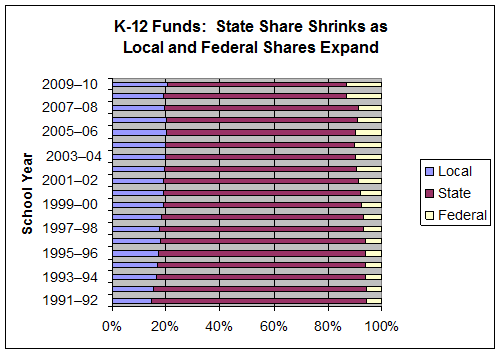Local Levies – Frequently Asked Questions
By League of Education Voters Policy Team
Across Washington state on February 11, many communities voted on local levies to continue funding for enrichment programs and capital projects at district schools. Here are frequently asked questions about those levies.
A local property tax passed by voters of a school district that generates revenue for the local school district. All money generated by school district levies goes directly to the school district to pay for enhancements to the state-funded basic education. By voting for a local levy, voters are voting for an additional property tax in their district.
289 of the 295 school districts had a local levy in 2019.
Basic education is the educational program that the state is responsible for funding.
- The state legislature defines the program of basic education and is required by the constitution to amply fund it. The state defined program of basic education is the minimum that districts are required to provide students — districts may offer additional programming and services with local funds. Currently, the program of basic education includes the number of hours and days of school that districts must offer, academic standards, and specialized instruction for students qualifying for special education, English language support, and students below or above standard academically.
A levy rate is the amount of property tax that voters approved to be assessed for every $1,000 of property value. A levy rate of $1.00 means that for every $1,000 of property value, the owner of the property will have to pay $1.00 in taxes.
- E.g., If a homeowner has a house valued at $200,000 and the voters passed a levy at a $1.00 levy rate, that will cost the homeowner $200 annually in property taxes.
A levy rate of $1.00 in a district with an average property value of $200,000 will generate $200 per household in levy funding, but a district with a $1.00 levy rate and an average property value of $600,000 will generate $600 per household for the same level of property tax. Districts can have the same levy rate, but raise very different amounts of money because the average property value of a district varies widely across Washington.
The levy rate a district can pass is now capped at $2.50 per $1,000 of assessed value, or a levy rate that would generate $2,500 per student – whichever would result in a lower levy rate.
- E.g., If a district can raise $2,500 per student with a levy rate of $0.80 per $1,000 then their levy lid is $0.80 because they have reached their maximum per-student amount in levy revenues.
- E.g., If a district with a levy rate of $2.50 generates $1,000 per student in levy revenues, their levy lid is $2.50 because they have passed a levy at the maximum rate allowed under state law.
Levy money can’t be used to pay for basic education, but districts are otherwise free to spend the money as they wish. For example, by law, levy funds can’t be used to enhance state-funded base teacher salary for teachers performing basic education duties, but levy money may be used for hiring additional staff or paying teachers for additional duties, such as after-school programming.
- Currently, a majority of levy dollars are spent on staff compensation. Many districts provide higher salaries for teachers through local contracts for additional time, responsibility, or incentives (TRI). However, many of the responsibilities within these contracts could be considered basic education duties, and often all teachers within a district receive this additional pay. Historically, this practice was common across the state because the state did not provide adequate salary to attract and retain teachers. The new state funding for teacher salaries is intended to address this issue.
- Levy funds have also been used to supplement other areas of basic education that have been underfunded by the state. Currently, many districts indicate that they still need to use local levy dollars to provide special education services to students that are not fully funded by the state.
Historically, over half of levy funds have been used to supplement staff salaries. With the recent funding changes, state funding has increased substantially for most districts, while local levy funds have been reduced. The increase in state funding for teacher salary was intended to ensure the state was paying the cost of hiring teachers who provide basic education and to free up local levy money to enable districts to provide more educational supports and enrichments for students, which may also include additional staff.
The way districts deploy their levy resources hasn’t changed since the state increased funding, so districts continue to use significant levy resources to increase staff salary above state-funded levels. All additional salary and staffing, such as additional counselors, above state-funded levels must be paid for by districts. Many districts and local bargaining units negotiated salary increases in the fall of 2018 above the state-funded levels, however districts have fewer levy resources available to pay for these increases. So even though most districts had a net influx of education funding, the combined levy and state resources didn’t meet the added costs of the new contracts in some districts.
Because of differences in property values, some districts can pass a levy with a tax rate of $0.80 and raise $2,500 per student, while other districts can pass a tax rate of $1.50 and raise only $107 per student. To compensate for the difference in ability to raise money through local levies, the state supplements districts who are able to raise less than $1,550 per student with a max levy of $1.50 per $1,000 of assessed value by providing additional funding called Local Effort Assistance (LEA). LEA is funded to ease the property tax burden of districts with low property values. It is not funded in a way that makes equitable resources available to districts.
Districts qualify for LEA if they satisfy the following conditions:
- The district would generate less than $1,550 per student with a levy rate of $1.50 in 2020.
- Pass a local levy.
Note: Districts are not required to pass their maximum levy in order to receive LEA funding, but they must have an active levy in order to receive LEA funding.
The amount of LEA funding a district is eligible to receive is determined by how close they come to passing a levy of $1.50 or higher.
- E.g., A district passing a levy of $0.75 or 50% of the $1.50 threshold would be able to receive 50% of their maximum LEA.
- E.g., A district passing a levy of $1.50 or 100% of the $1.50 threshold would be able to receive 100% of their maximum LEA.
District LEA funding can range from $1 - $1,440 per student depending on district property wealth.
No. The maximum funding a district can generate through local levies is $2,500 per student, except for Seattle Public Schools which has a local levy cap of $3,000 per student. Due to differing property values and the structure of levy and LEA laws, not all districts are able to raise the maximum of $2,500 per student in levy funding, even if they pass their max levy rate of $2.50. If districts pass their maximum allowed levy and receive their maximum LEA, if eligible, total available enrichment resources range from $1,550 - $3,000 per student across the 295 districts in Washington state for 2020.
Under the levy system prior to 2019, 205 districts had a levy lid that was capped at an amount equal to 28% of combined state and federal funding amounts. 90 of the 295 school districts in Washington had levy lids ranging from 28.01% to 37.9%.
- The average per student district levy was $2,329 in 2017 with district levy lids ranging from $1,600 to $8,000 per student. The disparity between district levy lids resulted from a combination of using district funding levels as the basis for levy lids, and the fact that some districts had levy lid percentages that were more than 30% higher than other districts.
The Court said that the state must meet its paramount duty to fund basic education so districts don’t have to spend levy dollars to provide a basic education for their students. The Court did not require the state to make any changes or reforms to the current levy system, only that the state must pay for the full cost of basic education.
The levy swap increased the amount of state funding directed at education. It increased the state property tax rate by $0.81 per $1,000 of assessed value, while making changes to the local levy lid that had the impact of decreasing the local tax rate for most districts. This also reduced the maximum amount districts can raise locally, beginning in 2019.
All districts saw a net property tax increase for calendar year 2018. This is because the state property tax increased while existing local levies stayed the same. When the new levy rules took effect in January 2019, the net tax impact on districts and net change in combined state and local funding is determined by what levy rate districts passed for 2019 and beyond.
The levy swap increases the amount of state property tax collected for education and decreases the amount of local property tax collected by school districts.
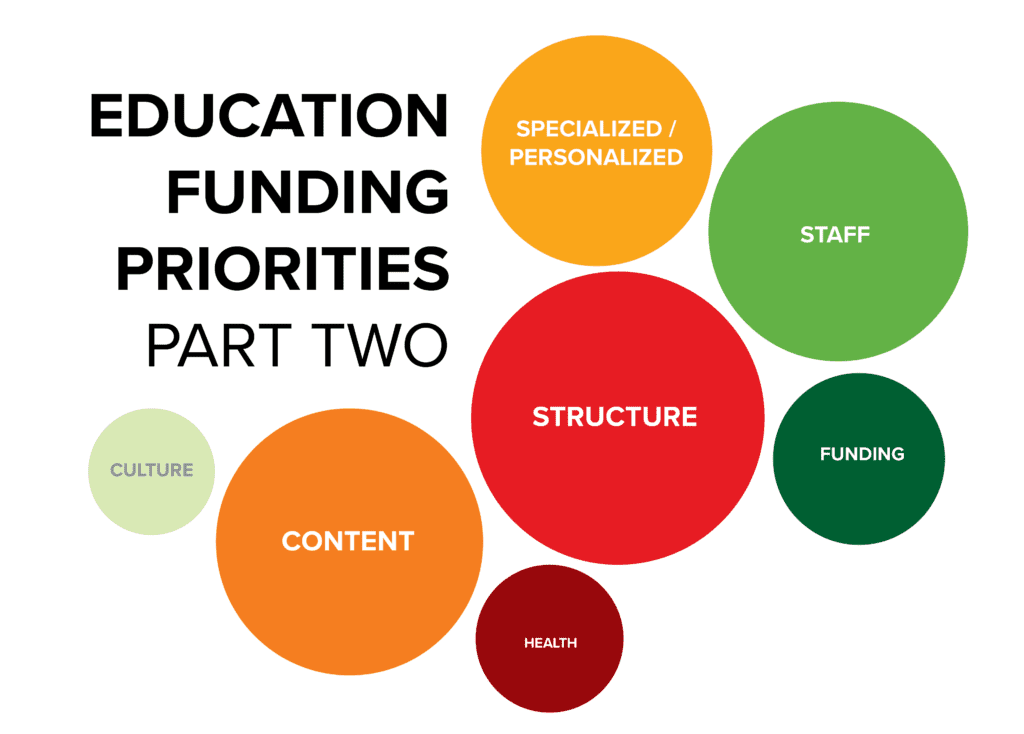

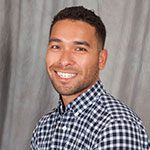 By Daniel Zavala, League of Education Voters Director of Policy and Government Relations
By Daniel Zavala, League of Education Voters Director of Policy and Government Relations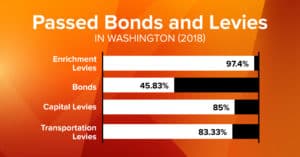 Last month, communities across Washington state voted on local levies to continue funding for enrichment programs and capital projects at district schools. Here are the election results and my analysis.
Last month, communities across Washington state voted on local levies to continue funding for enrichment programs and capital projects at district schools. Here are the election results and my analysis.
 The League of Education Voters has long argued that a child’s education should be a continuum with seamless transitions from early learning through higher education. We have worked with partners around the state in pursuit of that vision, including with the
The League of Education Voters has long argued that a child’s education should be a continuum with seamless transitions from early learning through higher education. We have worked with partners around the state in pursuit of that vision, including with the 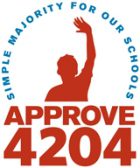 You did not see that headline last week, but you should have.
You did not see that headline last week, but you should have.